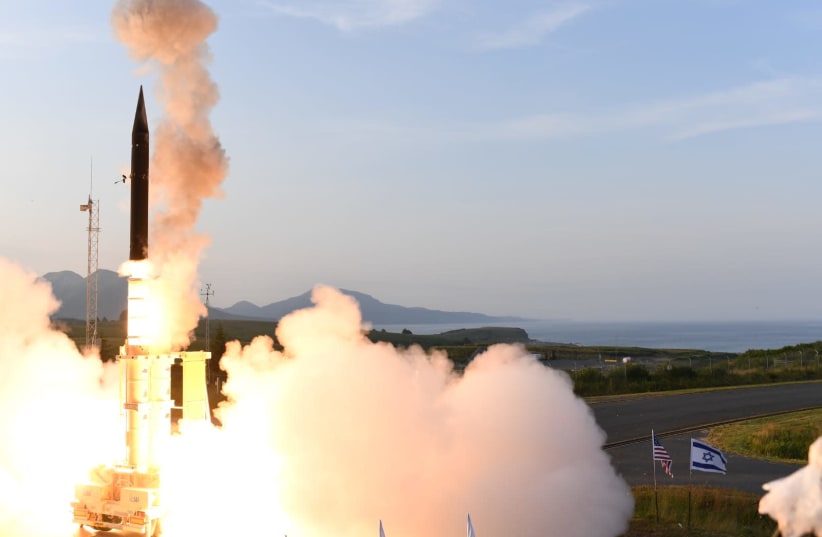This week, the annual bilateral strategic Israel-Germany Defense Dialogue took place. During the important talks, the two sides discussed Iran’s threats in the region as well as the Russia-Ukraine war. A statement about the meeting from Israel’s Defense Ministry said that, “additionally, the parties discussed developments in the proposal to provide the Arrow-3 air defense system to Germany.”
Also this week, Lockheed Martin and Rafael Advanced Defense Systems signed a teaming agreement that includes jointly developing, testing and manufacturing a High Energy Laser Weapon System (HELWS) in the US and Israel. This is related to Israel’s success with Iron Dome and the new Iron Beam project that Rafael has been working on.
Together, the reference to Arrow and also the teaming with Lockheed Martin shows how important air defenses are in today’s modern battlefield, and illustrates how Israeli technology is key to the kinds of air defenses that countries want today.
The Ukraine war has made many countries want to accelerate their procurement of new air defenses. In addition, as countries watch how Ukraine is attempting to defend its skies from the threat of Russia’s use of Iranian drones, the complexities of defending an area are becoming starker.
Ukraine has been downing large numbers of Russian drones. A Wednesday report said that more than a dozen Russian drones, of the Iranian-supplied Shahed 136 variety, were shot down in the last 24 hours. CNN also reported that “multiple attacks targeting Russian military infrastructure this week have focused attention on Ukraine’s efforts to develop longer-range combat drones.


“The Russian Defense Ministry says the strikes on two air bases Monday – followed by an attack on an airfield Tuesday – were carried out by Ukrainian drones, which it claims were brought down by Russian air defenses,” it said. “Imagery, both satellite and photographs, indicates some damage was done to Russian military planes at one base in Ryazan region.”
Russian air defenses clearly seem to have gaps. In addition Ukraine’s air defenses are improving every day. That comes at a huge cost of course: Moscow has done great harm to Ukraine’s infrastructure and caused power outages as the cold winter months arrive. Kyiv has found success using a variety of air defense systems, including the German-made Gepard, an air defense vehicle. There are some 30 of these in Ukraine and more are on the way.
What does the focus on air defense mean for the future?
As Lockheed and Israel’s Rafael work on laser air defenses, and Germany weighs acquiring the Arrow and other systems, there are also air-defense issues in the Middle East. Israel’s new Sa’ar 6 ships are now equipped with the naval version of Iron Dome and the Barak long-range air-defense system. Recently, the Barak was successfully tested against a simulated advanced cruise missile threat.
Meanwhile, Iran has tried to move air defenses to Syria, hoping to confront Israel’s “war-between-the-wars campaign,” an aerial operation designed to prevent Iranian entrenchment there. Iranian groups like Hezbollah are also seeking more air defenses. In the Gulf, the Iranian drone threat and the Iranian-backed Houthi threat have caused Saudi Arabia and the UAE to increase their procurement of systems such as the US-made Patriot and THAAD.
As Israel looks to the future, including working with partner countries and also overcoming threats in the region, the air defense issue will be a key to Israel’s success. At the same time, the Ukraine war is showing how dangerous weapons like Iran’s Shahed drones can be when used against infrastructure. Tehran’s use of drones to threaten ships in the Gulf of Oman is also a growing threat. In each case, better detection systems and air defenses are necessary.
